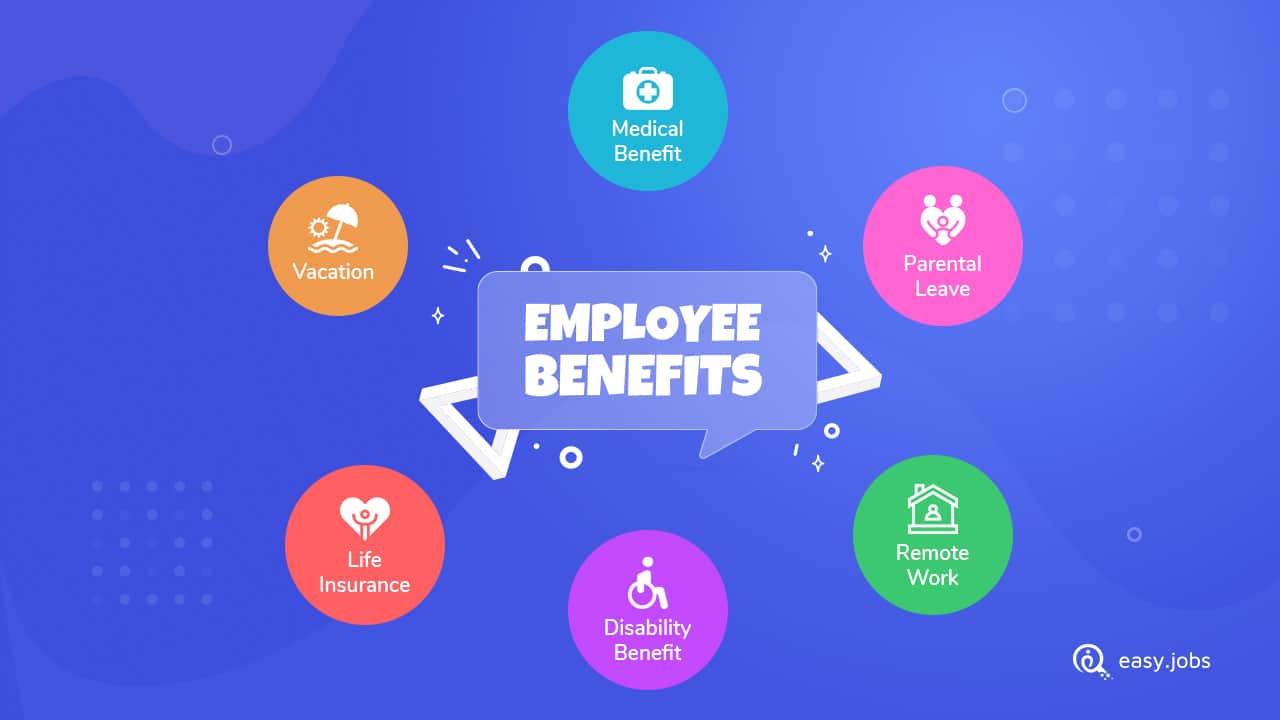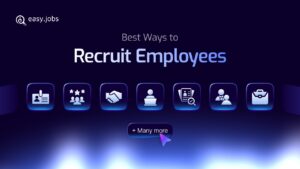The global pandemic has seen many companies embrace remote working to accommodate the massive changes in everyone’s daily lives. However, if you look a little closer, you will notice that modern workplaces have been adapting to flexible work schedules (or, flex schedules) from much earlier. Wondering why? With this detailed blog, we bring you all the answers – the types, the pros & cons, and more regarding flexibility in work hours.

Now that many employers have seen how successful telecommuting or adopting a flexible work schedule can be for their organization, companies around the world are offering flexible arrangements even after the risks of the pandemic have died down. Moreover, with fewer health worries, implementing work-hour flexibilities can lead to improved retention rates, productivity, and employee engagement in modern workplaces.
Even then, challenges always arise when adapting to new changes – and there are some disadvantages that come with such flexibilities too. Read more, and find out how employers and employees can both benefit from flexible work schedules, or whether the cons outweigh the pros. So, without further ado, let’s dive right in.
Flex Schedules: Work-Hour Flexibility In Modern Workplaces
Let us begin with the basics – what is a flexible work schedule or Flex Schedule? It is an alternative to the conventional 8/40 or 9/80 workweek, and it is quickly gaining popularity as the best choice for workplace schedules. It allows employees to sign in for or end a workday at customized schedules from different workspaces, as long as they deliver the tasks they are assigned to.
There is still structure: employees must work a certain number of hours (the core hours) specified by the company. Regardless, this brings the workers a level of autonomy and empowers them to create their own timetables and find a work-life balance that works for them.
Therefore, in short, workplace flexibility in schedules consists of a negotiated agreement between an employee and his workplace where he gets to:
🎯 Choose their work location between the office or home
🎯 Make a work schedule that suits them the best
🎯 They can choose how to arrange their workday
Top 6 Best-Known Types Of Flexible Work Schedules
By now, you have understood that there are many different types of flexible work schedules in the modern workplace. Let’s look at some of the most well-known ones for better understanding:

💼 Compressed Workweeks With More Off Days:
The first type of flexible work schedule is a compressed workweek. As you can already tell by the name, this relates to a work schedule that is no longer 5 days/40 hours a week. Instead, the workweek is reduced to four days with employees working four ten-hour days. Typically, a compressed workweek works best in office settings – because employees work longer periods of time, per day or shift, in exchange for a day off.
💼 Flextime & Daily Flexible Schedules:
A Flextime in the modern workplace is an arrangement where employees work a full day but their working hours can vary according to agreements established with employers. These arrangements may include specific guidelines so that a ‘core’ working day exists and the total hours of work are not affected.
The flexible routine is built in a way that co-workers can get accustomed to each other’s schedules and work around the clock. This is especially effective for a company’s Support Team, where employees may choose to start their work at different shifts so that at least one team member is constantly available to serve customers’ needs.
💼 Remote Working In A Virtual Workspace:

After the worldwide Covid – 19 pandemic hit, many businesses have embraced remote working facilities. This type of flexible work schedule allows employees to perform all work away from the office, on a temporary or permanent basis, giving employees more flexibility than ever to work and live wherever they choose.
💼 Part-Time Positions With Fixed Schedules:
Working part-time is a very well-known concept among all of us. However, what gets unnoticed is that part-time work or positions also fall under a specific type of flexible work schedule.
This kind of flexibility is a valuable substitute for workers who have other commitments outside of work, such as parenting or studying. If an organization assigns 40 hours/week of work to all full-time employees, a part-time worker can be someone working approximately 20 hours (or, fewer than the standard 37.5 hours a week).
💼 Job Sharing Between Employees For A Particular Goal:
Another type of flex work schedule is job sharing which occurs when two or more employees share positions or a set of duties in the workplace to achieve goals more effectively and efficiently. But it is very important that those in a job-sharing arrangement work effectively as a team, and communicate well to ensure the success of the shared goals.

💼 Gradual Retirement With Reduced Working Hours:
And finally, instead of abruptly shifting from full-time employment to retirement, gradual retirement allows workers to cut back on their working hours or workload over time. This time period might be used to train the new employee, assist others in adjusting to organizational restructuring, or redistribute work among the existing staff members.
While there are many more types of flexible work schedules that a modern workplace might adapt to, the ones mentioned above are the best-known. But how do these different types of flexibility in work hours affect employers and employees? Continue reading to find out more.
Countless Advantages Of Flexible Work Hour Arrangements
Now, let’s begin with the benefits of flexible work hours in the modern workplace – for both the employer and the employees. Hence, we have broken down the pros of flexible schedules into two sections below:
Top Benefits Of Flex Schedule For The Company:
If you are in doubt about whether you should implement flexible hour strategies in your company, the benefits listed down might help you narrow your options down. Continue reading to find out exactly how a flex schedule helps a company.
⭐ Recruit & Retain Better Talents For Your Company
When you offer flexible work-hour facilities, you open a wider and more talented applicant pool for your company. You’re free to appoint high-skilled individuals from anywhere in the world who prefer to work at custom schedules and grow your business – which would not have been possible with a fixed timetable or concrete workplace.

Flex schedules help companies stand out from competitors in the industry due to their employee-driven work culture. It helps to build a strong reputation in the labor market as an understanding employer who is flexible and who trusts and accommodates their employees’ needs. So, by implementing this powerful growth/hiring strategy, you will find yourself a loyal workforce with a much lower retention rate.
⭐ Lowers Absenteeism & Tardiness Among Workers
Studies show that when employees are allowed to make their own alternative work arrangements through negotiations and agreements with their employers, they are more likely to show up for their shifts on time. Moreover, there are times when a team member is too ill to commute to the office but not ill enough to prevent them from tasks from the comfort of his home – leading to reduced absence.
Employees tend to respect companies more when employers consider their situations and conditions, mostly because by offering flex schedules you, as an employer, have shown respect for them. And therefore, offering flexible scheduling to your staff dramatically lowers the number of unplanned absences and tardiness.
⭐ Boosts Cost-Effectiveness Per Worker
You can boost cost-effectiveness in terms of insurance and general salaries if you provide flexible options for remote working from home or a co-working space setting. Rent, office supplies, utility costs, internet bills, and even employee commute costs can be reduced because the majority of flexible work schedules require employees to work outside the office.
⭐ Encourages Diversity & Inclusivity In Office
The wider recruitment pool also promotes diversity in the workplace – as with a flexible work schedule or strategy workers from diverse backgrounds can now work in the same workspace. Modern jobs must offer equal opportunities to people from all spheres of life. You will be able to hire a renowned Marketer or Developer who isn’t situated in the same city or town as your company.

Employees who live in a nearby area, yet not close enough, can choose to physically join the office at a later time, while those who live hundreds of miles away can join via a digital workspace. Working parents, individuals with special needs, or those unable to work in an office setting can still contribute their skills, perspectives, and ideas from the comfort of their own homes.
Advantages In The Interest Of The Employees:
Now, let’s discuss how the employees in your team will benefit from the same flexible work schedule. Well, this labor strategy is part of an employee-driven culture and therefore, brings about many advantages for the workers in an organization:
⭐ Accommodates A Better Work-Life Balance
The benefit that makes flexible work schedules so popular among employees – it allows them to restore the optimal balance between work and life. Workers get to negotiate their timetables that accommodate time for family, childcare, social-life demands, educational requirements, and other creative pursuits. They can also make time for personal development by pursuing other passions, taking courses that polish their work skills, or others. The more well-rounded your employees are, the more likely they are to apply unconventional solutions to your company’s problems.
⭐ Boosts Employee Engagement & Relationships
One of the best ways to empower your employees and show you respect for them is to allow flexible work schedules – according to properly negotiated agreements. When you let people work flexibly, you say that you trust them to get their work done no matter how, when, or where that happens.

It boosts employee-to-employer relationships, pushes workers to focus on their assignments, and gets more engaged in the growth of the business. And engaged employees translate to fewer absences, more responsibility, longer work hours, and career longevity at your company.
⭐ Gives Employees A Sense Of Autonomy
Following that, when you allow your employees to work according to their negotiated flex schedules, it empowers them with a sense of autonomy and ownership at work. They feel respected and hence, obliged to take responsibility for their tasks.
⭐ Increases Productivity In The Workplace
Finally, once your team members get used to the employee-driven work culture at your company, flexible work schedules help to boost their productivity and efficiency. This is because employees work at their best in a customized schedule. A morning person can get to their desks earlier in the day, wrap up their work, and leave early too. Whereas, other employees can come in much later and continue with their tasks till later at night.

Note: There should be specified hours of work overlap to ensure all employees can collaborate or attend meetings as needed.
Moreover, with a distributed employee network and schedule, you will be able to ensure that operations continue seamlessly even during emergencies like extreme weather conditions. Remote employees can carry out the regular tasks and services, and still help your company stay in business – a phenomenon we have witnessed is the norm during the global Covid-19 pandemic.
And with that, we conclude our list of the best-known advantages or pros of implementing a flexible schedule in your business. But there’s more to it.
Challenges Faced Due To Flex Schedules In The Workplace
There’s a popular saying ‘Every great thing comes with a price’. Similarly, flexible work schedules also arise some challenges that might hamper operations in a modern workplace:
🚨 Cannot Be Applied To All Job Sectors & Career Paths
When talking about the difficulties that may arise with a flex schedule, we must start by noting that this type of working strategy is simply not applicable to all job sectors. There are some jobs that do not respond well to flexible scheduling or timetables, especially if hands-on services are involved.
🚨 Challenges The Management Team In Keeping Track
Sometimes, it might become too difficult for the management or team leads in your company to keep track of the tasks the employees are working on. You will need to ensure that proper measures are taken to keep up with the employees signing in at later hours than the conventional work schedule or track how remote workers are getting tasks done.

🚨 Leads To Communication Difficulties With Team & Customers
One of the most difficult challenges that might come about is miscommunication. Employers might find it unexpectedly difficult to arrange meetings with all of the team members present at a certain time, especially if the meeting is impromptu. Technological difficulties might hamper communication with anyone working remotely. And even worse, customer services may hinder if the right support team executive is not available to provide the services.
🚨 Builds Scopes For Workplace Toxicity & Weak Bonding
Since team members are not always available on the same premises at the same time, team bonding may be weak and lead to workplace toxicity. If this happens, you will frequently find employees getting into negative communication and not being enthusiastic about working together on projects. To be prepared for what to expect and how to handle toxicity in the workplace, check out our complete guide.
🚨 Reduces Overall Employee Benefits Significantly

Flexible working can take an almost infinite variety of forms. If you are simply changing the timetables while working the full 40/8 conventional workweek schedule, your salary should not be affected. However, with reduced hours, you will be earning less than your peers who are spending long hours in the work. The same applies to remote workers, who will most likely miss out on travel benefits, and office events. As a result, your employer’s pension and benefits contributions are likely to reduce significantly.
🚨 Blurs The Line Between Personal & Professional Life
And finally, the worst that can happen – flexibilities blurring the line between personal and professional life. It can be something as simple as your employee’s kids interrupting your meetings in the digital workplace (and, haven’t we seen examples of that happening during the pandemic). Or, it can be a regular feeling of being on duty around the world because a co-worker may contact you after hours because he is still working at the time.
Weighing The Pros & Cons Of Flexible Work Schedules
And with that, we are at the end of our complete guide on flexible work schedules in the modern workplace. Whatever choices you decide to implement and make available for your business, it is important to clearly define the responsibilities, timelines, and expectations of your employees.
For the certain success of these flexible strategies for your business, you also need to ensure a supportive organizational culture, clear communication, teamwork, and reciprocal support between employees and management. Only when you consider all the positives and negatives of a flexible work schedule will you be able to choose the strategy that best works for your company.
We hope this guide will have helped you; let us know if you use any of the proven productivity boosters we have listed in this blog by commenting below. We would love to hear from you. Be sure to subscribe to our blog page for more such insight articles and the latest news, or join our friendly Facebook Community to meet other business owners and entrepreneurs like yourself.







